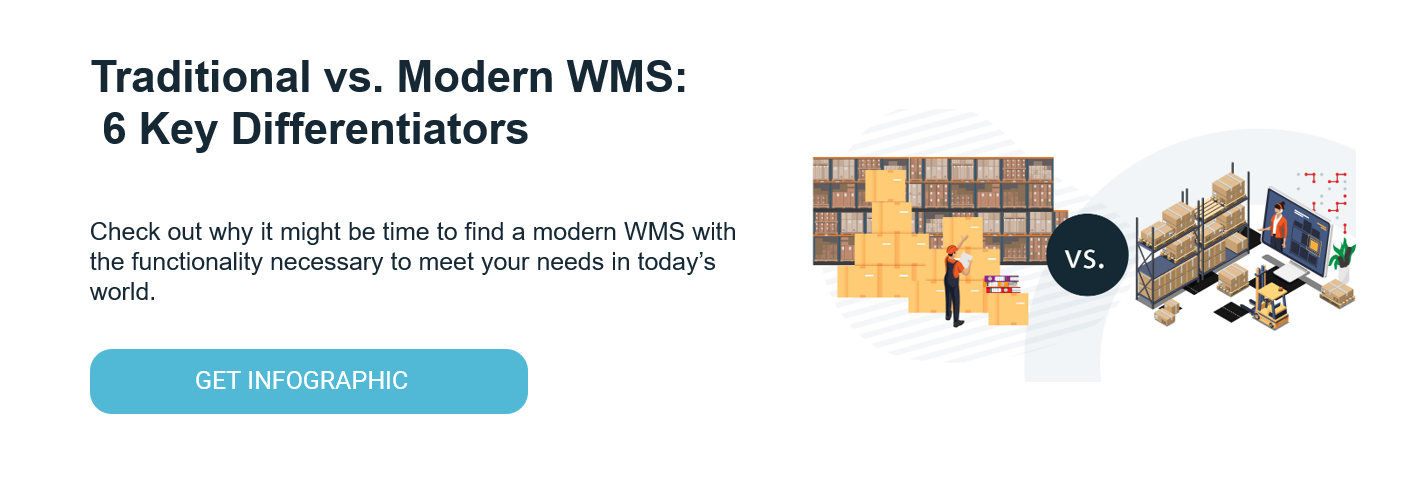Key Features of a Warehouse Management System

For distributors, third-party logistics providers (3PLs) and retailers, the warehouse is the cornerstone of your journey to operational excellence. The heart of your warehouse operations is a warehouse management system (WMS). It’s what makes or breaks your ability to deliver the level of service your customers expect and demand. Therefore, you must make sure your WMS is in good health because you need it to manage your daily business initiatives, support your adaptability and drive your future innovations.
So how can you tell if your WMS is in good health? I’m sharing the key features of a healthy warehouse management system to help you determine what you need to do to achieve warehouse operational greatness.
5 Key Features of a Warehouse Management System
1. Streamlined Inbound and Outbound Flow of Inventory
This feature is related to the table stakes and most modern warehouse management systems do come with this feature. However, stop a moment and think about the changes that you have seen in order size and order volumes with the rise of e-commerce and direct-to-consumer shipping. Review how many small orders versus medium-sized orders you now must manage. Your WMS should be able to efficiently support a wide mix of smaller outbound orders. Additionally, your WMS should also manage customer personalization and customer-specific product ordering, all at scale.
2. Warehouse Resource Optimization
Making the most of all the resources you have available to you in your warehouse is increasingly the key to operational efficiency. Your warehouse management system should drive the most efficient use of your labor, space and equipment either as a feature built directly into your WMS or as an add-on module.
3. Open and Flexible Automation Connectors
As labor shortages and skyrocketing costs bring steep hurdles to your business, the ability for your warehouse to support automation will be a significant factor in your future success. Your WMS needs to work well with automation and have those built-in connectors. As your warehouse operations grow and scale, you need this key feature of a warehouse management system for the flexibility it provides in adopting new technology.
4. Easy Deployment and Onboarding
Speaking of growth, a WMS needs to be able to flex and contract due to seasonality and expansion. You want to keep your time-to-productivity from increasing when new staff are hired. That’s why it’s essential your warehouse management system is fast to adopt and easy to train. But keep in mind, your WMS can’t be too simple — it must still support your complexity or functionality requirements.
5. Control
Finally, but most importantly, the days of your warehouse management system being one that any changes or reconfigurations require the vendor or partner to ‘come set that up’ are long gone. Your warehouse management system must be one that you can control, configure and manage without technical support from the ‘experts.’ If you can make the WMS your own, you can support your changing business needs.
In Closing
Your supply chain and associated warehouses are critical factors in your business success. As warehouse management systems continue to evolve, you will see innovative new features that are designed to support customer demands and how you need your WMS to work for you. In the meantime, make sure you at the very least have these five key features of a warehouse management system to support your operations today.




